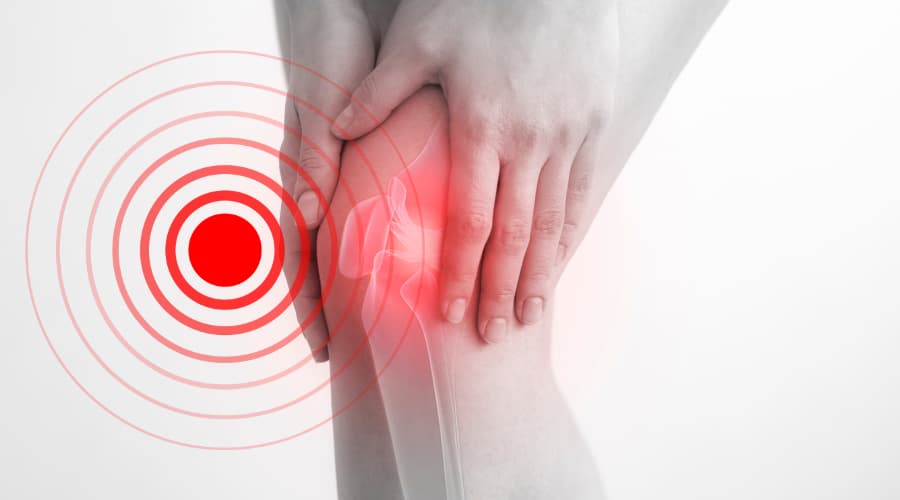If you’re like most people, you have heard of chiropractors and osteopaths before, and you may now be in a situation where you could benefit from one or the other. However, it can be a challenge to determine which one is the better choice or if there is a difference between the two professions. While they may be similar in many ways, they aren’t identical in all ways or else there wouldn’t be two titles and two different practices available.
Most would-be patients put off appropriate care because they aren’t sure what they need, which can damage their joints and cause irreparable damage.
Of course, there are a few historical differences between the professionals, at least philosophically, but most people primarily want to know how treatments might differ by visiting a chiropractor or an osteopath.
As with many professions, there can be a significant variance in the way that each type of professional operates within their practices. Therefore, a chiropractor may perform some treatments like an osteopath, and some osteopaths may limit their services to that of chiropractic care.
However, for the most part, chiropractors and osteopaths are different. Many patients that have been to both therapists say that chiropractors can practice like osteopaths and vice-versa. The osteopaths that act like chiropractors might not massage the soft tissues or may not have any focus on rehabilitation at all. They might only manipulate or adjust the joints. Likewise, some chiropractors use soft tissue massage and other rehabilitative methods while adjusting the joints.
The primary difference between chiropractic care and osteopathy is that, while chiropractors are primarily focused on the joints and spine, osteopaths are more concerned with the whole body and take on a more holistic approach. Therefore, an osteopath may not solely focus on the musculoskeletal system or symptoms. They may also help people with other systemic problems within the body, such as respiratory, cardiovascular, and digestive problems. While these problems may not seem related to the joints and spine, a pinched nerve in the neck can cause symptoms similar to that of a heart attack or stroke. Likewise, some people may find it harder to breathe because the body is tight and the muscles are stiff, especially those around the spine and back area.
In most cases, chiropractors use adjustments, which focus on restoring the joint’s functionality and position. It’s usually a specific movement or motion that ‘forces’ the body back into place. Osteopaths may use adjustments if they feel it necessary, but they have a broader approach and treat larger areas of the body.
Both professionals have undergraduate training and are there to care for your health above all else.
What Is Osteopathy? What Do Osteopaths Do?
Osteopathy is considered an alternative medicine that focuses on myofascial release, manual adjustments, and other physical manipulations of the bones and muscle tissue. The UK’s National Health Service claims that osteopathy can be effective for some lower limb, shoulder, and neck pains and can be a method to recover after knee and hip operations. However, the NHS believes that there is no evidence that osteopathy is effective for treating any health conditions that are unrelated to the muscles and bones, which includes headaches, digestive disorders, migraines, severely painful menstruation, and depression.
However, the first school of osteopathy, established in 1917 in London, has paved the way for many other schools and colleges to offer osteopathy education. Along with such, a professional must be registered to become an osteopath. Therefore, the practise is regulated, and many colleges only teach osteopathy to people who are physicians already.
The benefits of working with an osteopath are plentiful, though it can depend on your particular health condition. Along with such, it is essential that you feel comfortable with and trust the particular osteopath with which you’re working to ensure that you are comfortable with them physically touching you. Osteopaths tend to focus on musculoskeletal issues, so if you have problems with arthritis, postural imbalances, joint/muscle strains, and conditions such as sciatica and whiplash, they can be highly beneficial.
Some osteopaths believe that the spine can influence other areas of the body, as well as immune health. Osteopaths explore health from the body’s perspective instead of the condition or disease’s perspective. Therefore, you might get better care for conditions that involve immune system imbalances or hormone imbalances.
What is Chiropractic? What Do Chiropractors Do?
The GCC (General Chiropractic Council) states that chiropractic is a healthcare profession that is primarily concerned with the treatment, diagnosis, and prevention of a variety of mechanical disorders that might affect the musculoskeletal system. These effects can adversely affect the nervous system’s ability to function correctly, as well. Primarily, chiropractic focuses on the joints and spine, as well as the overall connection to the body’s nervous system. The word itself means ‘be done by hand.’
Chiropractors typically use spinal adjustments to restore your joint functionality and support the overall nervous system. They can help you maintain your optimal health without having to resort to surgery or drugs.
A chiropractor is a primary doctor that specialises in spinal well-being and health. They focus on conservative care of many spine-related issues and disorders. Most chiropractors stick with manual adjustments, but some chiropractors also offer tips on lifestyle changes, fitness coaching, nutritional advice, and soft-tissue therapy.
The chiropractic adjustment is a safe, controlled, and specific force that is applied to the joints or muscles to restore proper mobility and function. Many times, falls, accidents, stress, and overexertion of the muscles can severely impact your spine and related joints. These changes can impact the tissues and other areas of your body. If left unresolved, you might become more susceptible to other chronic problems and may experience more pain throughout your day. Chiropractic adjustments can improve performance, increase movement, and reduce pain.
Chiropractors can treat a variety of issues, though most people believe they only treat neck and back pain. Chiropractors treat headaches and migraines, repetitive injuries, lower back pain, sciatica problems, arthritis pain, sports injuries, neck pain, and automobile accident injuries.
Some chiropractors also use exercise regimens to help stretch and strengthen the affected areas, as well as hot and cold therapy.
Primary Differences Between Chiropractors and Osteopaths?
Most people don’t realise that chiropractic therapy is derived from osteopathy. Osteopathy was invented in 1872 by Dr Andrew Taylor Still, and chiropractic therapy was invented in 1895 by Daniel David Palmer, a student of Dr Still. Therefore, there are plenty of similarities between the two professions. However, there are subtle differences between these two techniques, which means one option may be more suitable for your condition than the other.
The primary difference between chiropractors and osteopaths is that, while chiropractors focus primarily on the joints and spine, osteopaths are also concerned with the overall body and how it functions and acts as a whole. Osteopaths work holistically, which means they look at what contributing factors you might have that are causing the symptoms of pain or pinched nerves.
Regardless of whether you see a chiropractor or osteopath, you should expect them to take a case and medical history. They ask you questions about what hurts, when it happened, what you were doing, and more. They are also going to examine you, which might require you to move your arms, stand up straight, and more. They are also going to diagnose you with a particular disease or condition. You may get multiple diagnoses depending on your issues.
Once you are diagnosed correctly, both professionals are going to work out a treatment plan for your condition. This may include seeing the professional many times a week in the beginning. Once your body starts healing and working correctly without as many treatments, you can work on managing the pain and getting maintenance. Most chiropractors and osteopaths are also going to suggest that you do rehabilitative exercises, though some chiropractors do not offer this treatment option.
Many times, chiropractors and osteopaths will talk to you about your activities, lifestyle, or sport of choice. They can offer advice on how to prevent pain and issues while helping you improve your range of motion, flexibility and more.
Treatments Performed by a Chiropractor and Osteopath
Chiropractic therapies can be varied depending on the chiropractor. They primarily use spinal manipulation (adjustments) to treat back and neck pain. However, they perform an evaluation of your neurological and physical issues before diagnosing you and treating you. Common treatments can include spinal traction, therapeutic stretching and exercise, transcutaneous electric nerve stimulation, manual soft-tissue therapies, diet/nutritional counselling, ultrasound, and help with lifestyle modifications.
Stretching and exercise can be done at the practitioner’s office, but many times, patients receive instructions on what to do at home and how often to do it. The chiropractor should show you the proper way to do these exercises and give you printed information on what to do.
With spinal traction, traction devices are used on particular areas of the spine. It helps to separate your vertebrae, which reduces nerve root pressure, decompresses the discs, and reduces pain.
Soft-tissue manual therapy can include instrument-assisted soft-tissue mobilisation and much more. Primarily, chiropractors work with physical therapy techniques, such as muscle stimulation using electrical pulses on particular areas of the body. Electrodes are put on the skin, which, when the machine is turned on, forces the muscle to contract and release. This type of treatment can treat muscle spasms and prevent muscle atrophy.
Ultrasound can also be used, which offers deep heat therapy using sound waves. When it is applied to the joints and soft tissue, the sound waves can micro-massage the area to reduce swelling, decrease pain, muscle spasms, stiffness, and increase blood flow to the area.
Ice and heat therapy is also used, usually before and after treatment. The heat relaxes the muscles and gets them ready to be worked while ice can reduce swelling and settle the muscles at the end of the session.
Most chiropractors also offer diet and lifestyle change help. If you’re eating unhealthy foods, you’re more likely to develop serious health problems. Eating right can also help your body repair itself. Lifestyle modifications can include exercising, quitting smoking, reducing mental stress, stopping the use of medications, reducing your alcohol consumption, and improving your posture. If necessary, chiropractors can help you modify activities that you enjoy doing so that you can do them without injuring yourself or making the pain worse.
On the other hand, osteopaths tend to use manipulative treatment to reduce muscle pain, carpal tunnel pain, and migraines, among others. These treatments are a set of techniques, usually done by hand, by osteopathic physicians that can prevent injuries, treat problems, and reduce your risk of re-injuring yourself. The osteopath can move your joints and muscles using a variety of techniques that put gentle pressure on the area, make the muscles work to resist, and stretch the muscles.
With OMT, treatment can ease pain, increase mobility, and promote healing. Though it is primarily used to treat muscle pain, it can also help with many other health issues, including menstrual pain, migraines, sinus disorders, carpal tunnel syndrome, and asthma. Because it is manual pressure, the amount of pressure used can treat many issues, such as tissue and structural abnormalities, relieve joint misalignment and restriction, restore tissue and muscle balance, and promote more blood flow throughout the body.
Osteopaths can also use massage to relax and release muscle tension, stretch stiff joints and muscles, and more. Articulation works by moving the joints through the natural range of motion, stopping if pain or discomfort occurs. High-velocity thrusts are sharp, short movements to your spine, which may produce a popping or clicking noise.
Any spinal manipulation from an osteopath or chiropractor should not be painful. However, you might expect to be sore for a few days, especially if the area is particularly inflamed or painful.
In short, a chiropractor uses manipulative techniques to adjust your spine and joint position to improve nerve function and the ability to heal while osteopaths use massages, manipulation and stretching to help re-balance the body’s structure to enhance nerve function and blood flow. Both professionals use similar treatments, but osteopaths usually use multiple treatment options while chiropractors tend to focus on spinal manipulations.
Educational Requirements for Chiropractor and Osteopath
An osteopath is sometimes called an osteopathic physician, which means they are a licensed medical practitioner that was trained in the area of osteopathic medicine. They are considered licensed doctors, so they are fully trained and licensed physicians. Likewise, just like medical doctors, they can legally and authoritatively diagnose and treat a variety of health conditions and can prescribe medications. However, osteopaths rarely prescribe medication because the overall goal of the therapy is to use alternatives to medication.
Osteopathic medical school tends to focus on the entire person and how the musculoskeletal system connects with the symptoms and diseases. Doctors of Osteopathic Medicine must still complete undergraduate and medical school, as well as have specialised osteopathic training. Along with such, osteopaths must be registered in the UK with the General Osteopathic Council before being allowed to practice. Along with such, osteopaths must have appropriate professional indemnity insurance before they can practice in the United Kingdom. They must also have a check by the Disclosure and Barring Service if they plan to work with vulnerable adults or children.
How to Choose an Osteopath or Chiropractor
The steps for choosing either a chiropractor or osteopath are similar. However, what you look for can differ, depending on your current needs.
It is important to understand that a chiropractor must be registered by the General Chiropractor Council. To do that, the person must have a degree in chiropractic recognised by GCC. They must not have any health concerns that could prevent them from giving safe treatment to you, have appropriate indemnity insurance, and be up-to-date with their skills and knowledge.
Chiropractors need continuing education because the world of chiropractic is always changing and evolving. New techniques are introduced often, and you want to ensure that you have the best care possible with the latest advancements.
When interviewing chiropractors, it is essential that you take into consideration their bedside manner. Most people don’t think to talk to the chiropractor and decide if they feel comfortable with them. However, these people are going to be very close to your body and must touch the body to do their work. If you feel uncomfortable in any way, you may feel stressed, and the muscles may be tense.
You may also want to ask the chiropractor what methods and techniques they use. You may not know the terminology, but it gives you an indication that the chiropractor knows what they are doing. It also gives you time to research the terms so that you are more familiar with the treatments. It may be prudent to request a free consultation or a meet-and-greet visit. Here, the chiropractor does not take any information from you; you two can chat and get to know each other professionally so that you both feel comfortable. Then, if you do feel comfortable with the professional, you can continue the evaluation process. If not, you can leave and seek out another chiropractor.
Choosing an osteopath is similar to choosing a chiropractor. For one, the title ‘osteopath’ is protected by law. Therefore, someone has to go through the proper training and standards before they can be called that term. The General Osteopathic Council has a set of standards and rules that must be met, and all osteopaths must be registered with the GOsC. Some of the standards include having a Master’s degree in osteopathic medicine, ongoing skill development, and professional standards. You can easily find out if an osteopath has the right to call themselves by that title by searching the register.
Each osteopath is likely to have a particular focus or philosophy. They’re a varied bunch with various skillsets and technique styles that can vary widely. The biggest difference between osteopaths is likely the structural or cranial aspect. Structural osteopaths focus on complaints by physical techniques that stretch the muscles, change movement patterns, and mobilise the joints. Cranial osteopathy is more gently and uses a sense of touch to feel how subtle changes affect the entire body. While most osteopaths use the ‘structural’ approach, some use a combination.
Diagnosis and treatment are linked to how the osteopath works to focus on balance, release, and restoration of health. Before choosing to work with a particular osteopath, you might want to find out how they treat issues to see if it is what you need. You should also pay close attention to whether or not they focus on the complaint you have or if they tend to ignore that and focus on other issues. For example, you may be experiencing shoulder pain, but they keep talking about your poor balance, the fact that you smoke, or bemoan other lifestyle choices you make. Instead, you want an osteopath that takes into consideration your lifestyle choices and helps you treat the pain regardless of them. Of course, everyone (medical doctors included) are likely to request that you eat healthy, lose weight if needed, exercise, and quit smoking. It’s in the way they say it that matters.
Regardless of whether you’re working with a chiropractor or osteopath, you may want to get recommendations from friends and family. Social media makes it much easier to get recommendations because you can quickly ask everyone who sees your feed. Of course, this may mean that you get varied feedback from people not in your location, but it can still help.
Along with such, you can use social media to search out a particular chiropractor or osteopath with which you’re considering working; you can read what others have had to say about their experience to help you form an opinion. Just make sure that you thoroughly research their background, training, and registry before making a final decision.
Related Articles
- Chiropractor or Osteopath for a Trapped Nerve or Sciatica
- Osteopathic Massage or Sports Massage
- 8 Signs You Need to Visit the Chiropractor
- FAQs for Those New to Visiting the Chiropractor
- Chiropractor or Physiotherapist – Who Should I Use?




